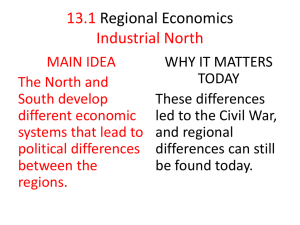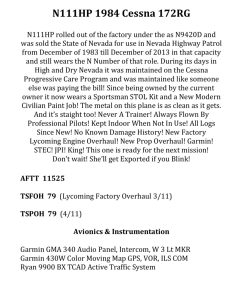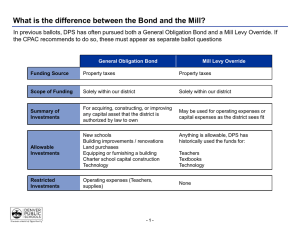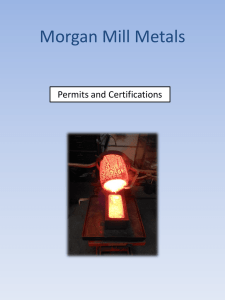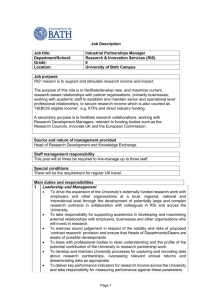Energy Management At KTPS
advertisement
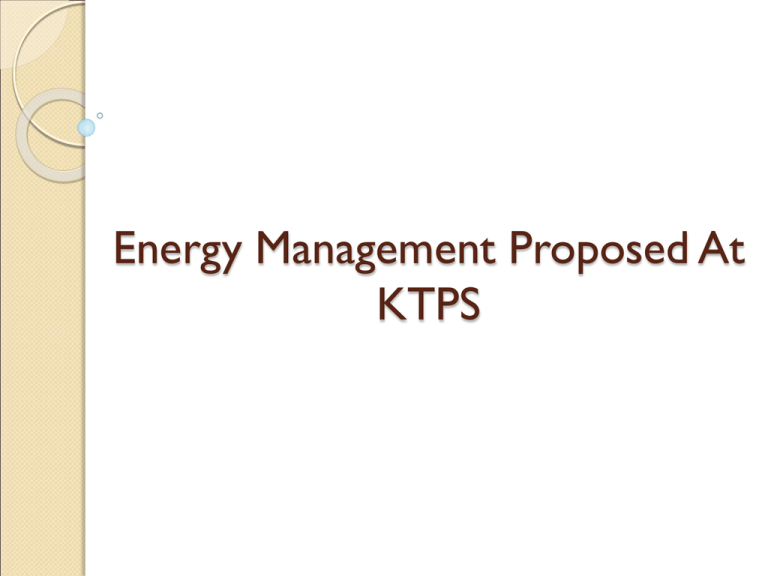
Energy Management Proposed At KTPS Objectives for Energy Management Generate energy at lowest possible price Manage energy use at highest energy efficiency Reusing and recycling energy Select low investment technology to meet present requirement and environment condition Make use of wastes generated within the plant as sources of energy and reducing the component of purchased fuels and bills Energy Management Planning At KTPS Appointment of Energy Manager Preferably Senior manager Responsible for overall coordination Reporting directly to CGM With technical background and familiar with organizational activities Responsibility – CGM- KTPS Energy Management Planned 2 Set up an energy monitoring and reporting system Set up system to collect, analyze and report on organization energy costs and consumption ◦ This will provide overview of energy use and related cost and identification of savings Recoding of historical as well as ongoing energy use and producing summary reports Responsibility – EE(POG) 3. Conduct Energy Audit Where and how energy is used and evaluate potential for savings Walk through survey, energy systems Review, Energy use analysis, energy budget to provides baseline for comparing energy use over time Audit by in-house or from outside Responsibility – EE(POG) Energy Management Planned 4. Formulation of an Energy Policy Statement Guide efforts towards improving energy efficiency Represents commitment to saving energy Ensure that success is not dependent on individuals Declaration of commitment from KTPS management Responsibility- Energy Manager Energy Policy will Indicates general aims as well as targets relating to Energy consumption reduction (Electricity, Fuel oil, gas, Water, etc.) ◦ ◦ ◦ ◦ ◦ Energy cost reduction Timetables or Timely Action Budgetary limits Energy cost centers Reorganization of management resources Energy Management Planned 5. Preparation and undertaking detailed implementation plan Project implementation plan will be developed as part of energy management ◦ Plan shall include implementation time frame, funding and budgetary requirement Projects can be diverse such as Changing or establishing operational procedures, asset acquisition etc. Responsibility- Respective Area Heads 6. Implementation of Staff Awareness and training program ◦ Key is to maintain high level of awareness among staff ◦ Formal training sessions, news letters, posters, publications etc. ◦ Communication of programs and case studies that demonstrate energy savings ◦ Outside specialist training Responsibility- Training Sub Centre Energy Management Planned 7. Review Review of energy management policy and strategies will form the basis for developing an implementation plan for the next 12 month Types of Energy Audit Preliminary energy audit Detailed energy audit Type of energy audit chosen depends on ◦ Depth to which final audit is needed ◦ Potential and magnitude of cost reduction desired Benchmarking Proposed for energy performance of KTPS Internal Benchmarking Historical and trend analysis External Benchmarking Across similar Power Generating Units Scale of operation, vintage of technology, Coal Quality Immediate Measures for Maximizing System Efficiency Elimination of steam leakages by trap improvements Maximize condensate recovery Adopt of combustion controls for maximizing combustion efficiency Replace of pumps, fans, air compressors, refrigeration compressors, and other energy conservation equipment, wherever significant energy efficiency margins exist Reduction of Power Consumption for Bowl Mills At 100% design capacity of the Mill, each size of mill will have a typical figure as KW/Ton of coal ground. However, as the mill loading is reduced this value does not reduce proportionately, but would be higher/ ton of coal ground, especially for smaller size of mills. For the same output of mill, if the HGI value reduces or the PF Fineness or % moisture or % of large size raw coal increases, the power consumption of the mill per ton of coal ground would increase. For the same output of mill, if timely maintenance is not carried out, the power consumption of the mill per ton of coal ground would increase. Mill operation, if not optimised, would result in higher power consumption. Steps Planned to Reduce Power Consumption for Coal Mill To provide, at design stage, planetary gearbox in place of worm gearbox. The efficiency of PGD is 95 % compared to 90% of gb with worm gear. The power saving will be about 20kw per mill. If the output fineness is permitted to be 98% thru 50 mesh instead of 99%, the power saving will be about 1520 kw per mill( the spring compression can be reduced & output can be increased). Usage of specific oil (shell) in gearbox will reduce power consumption by 10-20kw (as claimed by the suppliers). Energy Conservation Measures For Auxiliaries. Sl Recommendations . N o. 01 Clearing the ducts and passages (around the fans) of debris and ash to reduce hydrodynamic resistance. 02 Checking and restoration of healthiness of bearings of all HT and LT motors. 03 Servicing of air compressors, non return valves, compressor lines, arresting the line leakage, etc.. Remarks The hydrodynamic resistance of ducts is reduced after overhaul. The bearing temp. of HT motors is reduced after overhaul. Auxiliary power for compressed air system is reduced after overhaul. Energy conservation measures for auxiliaries. Sl. No. Recommendations Testing and replacement of transformer oils of generator and all auxiliary transformers. 4 5 Measures implemented Transformer oils are tested for water content, acidity, etc., and found to be all values are within the limit. Generator and unit auxiliary transformers’ oil was filtered. Checking of resistance drop The spring tension of across the HT and LT all the HT and LT breakers which should be breakers are in the range of 100 to 150 adjusted, contact mW. resistance is reduced by cleaning the contact surfaces. Remarks The improved quality of transformer oil reduced the winding temp. which lowered the winding losses. The contact resistance of HT motor breaker’s is reduced after overhaul. Energy conservation measures for pumps and motors. Sl. No. Recommendations 1 BFP re-circulation valve passing may be arrested by lapping and blue matching or replacement of stem and valve seat. Remarks The feed water flow passing in BFP recirculation valve is reduced. 2 Servicing of pump impellers of ASP The auxiliary power for and RWP, reducing the water to ash ASP is reduced ratio below 5:1 (from present value of 10:1) for ash slurry, maintaining the adequate pressure flow by throttling the valve, arresting the leakage in gland and pipe lines. ENERGY CONSERVATION MEASURES FOR FANS AND MOTORS. Sl. Recommendations No. 01 Checking and restoration of clearance between impellers /blades and casing. 02 03 04 05 Checking and restoration of surface finish and profile of fan blades to the design condition. Checking of motor and fan bearings. Controlling O2 at APH outlet from 6.5 – 7.0 to below 4 %. Reducing the hydrodynamic resistance of flue gas duct Measures implemented Remarks The clearance between impellers and casing is maintained as per manufacturer’s recommendation. ID fan impellers are replaced. PA and FD fan impellers blades are found O.K. Drive and Non-drive end Bearings are checked and overhauled. The internal leakages in fans is reduced and auxiliary power is reduced. do The bearing temp. are reduced after overhaul and thus the frictional losses in motors are reduced. Damaged APH seals are The O2 at APH is replaced and furnace air reduced to 4.0 - 4.5 ingress is also reduced. % Debris are cleared in the The pressure drop flue gas duct. across the flue gas duct has been reduced. Conclusions The timely overhaul of equipment will enhance the performance of the equipment. Reducing the air leakage through APH, furnace ingress, air/flue leakages in the ducts reduce the auxiliary power. Performance improvements will help in: Reduced environmental burden Improvement of reliability of power generation Reduced oil Consumption. Reduction in capital investment. The implementation of energy conservation measures during overhaul reduces the in-house auxiliary power. Thanks…



